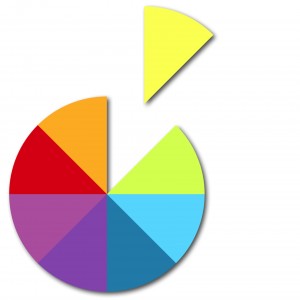When I ask an artist, “Who’s your target market?”
If they respond with something like, “Affluent women in their 50s.” They’re in real trouble
Just so that we’re clear. This is not an example of a “target market.”
Allow me to offer a story about luxury retail to clarify the concept of a target market.
Why luxury retail?
Because as artists we are in the luxury retail business.
Imagine, if you will, a professor of biology who recently retired from the University of California at Davis.
She’s attending a New Year’s Eve party and will be wearing a worn black cocktail dress but she needs a new pair black pumps to go with it.
Now imagine a hot and sexy, 33 year old, intellectual property attorney who works in the Financial District of San Francisco.
She’s also attending a New Year’s Eve party wearing a new black cocktail dress and she also needs a new pair of black pumps. She actually already owns over a dozen pairs.
By the way, they both wear the same size shoe.
They’re both affluent and in the market for the same product for the exact same reason.
But are they?
- How similar do you think their black pumps are going to look?
- What’s going to be different?
- How are their values different?
- What problem needs to be solved for each of these women?
The young attorney’s problem is not just that she needs another pair of black pumps.
Her problem is that she wants to look stylish and feel sexy. Comfort and price are not factors. She wants the latest designer shoes to broadcast her success.
So she purchasing a pair of ankle breaking high heals with toes so pointy that she could kill a cockroach in a corner.
The retired professor’s problem is that she’s downsizing. She’s keen to declutter her closet.
But she’s willing to invest in a pair of comfortable classic pumps that will last.
She wants to look stylish but not at the expense of her comfort because she’ll be dancing in these shoes.
Even though they wear the same size shoe, do you think they’d ever borrow each other’s shoes?
The lesson is this. Although the product and the occasion are the same, each woman has a different problem.
What are their problems based upon?
Their values.
And this is why it’s imperative that, as an artist, you know your values and how your art actually conveys them.
- Who are you and what do you stand for? What do you stand against?
- How do you clearly convey your particular point of view?
- Who cares and shares your point of view? Not everyone!
Why must you know?
Because your art cannot serve everyone.
There’s as many shoes to choose from as there is art.
So you must only serve a target market, whose values you actually share.
Usually artists don’t know their target market so they cast a really wide net hoping to yield a greater catch.
What happens? They seldom catch a fish.
If you don’t know your target market, you’ll sever no one, least of all yourself.
Bottom line. You’ll sell very little art.
Hint: As an artist, before you know your target market, you must know yourself.
And this is precisely where artists must part ways with conventional marketers.
What’s your creative purpose?
Hint: This has everything to do with you but not your art.
What is your mission?
Hint: This has everything with the problem you are solving with your art.
The moral of this story?
It’s not about you, it’s about them. Your target market. And when you make it about them, then it will be all about you.
Are you 100% crystal clear on your target market?
Maybe not?
Let me know below.
About Ann Rea
Ann Rea is a San Francisco based Artist and Entrepreneur. Her inspired business approach to selling her paintings have been featured on HGTV and the Good Life Project, in Fortune, and The Wine Enthusiast magazines, profiled in the book Career Renegade. Rea’s artistic talent is commended by American art icon, Wayne Thiebaud, and she has a growing list of collectors across North America and Europe.









